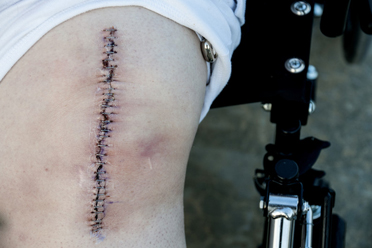 Joint replacement surgery is recommended for patients whose symptoms do not respond to other treatment. When it comes to reporting claims, it is very important to prove that this procedure is medically necessary for the patient. It requires a specific documentation that includes complete description of history and clinical findings to prove the recommendation of surgery was reasonable and necessary for the patient. Without proper documentation of medical necessity through accurate orthopedic transcription, your claims are likely to be rejected and managing the patient’s condition also becomes challenging.
Joint replacement surgery is recommended for patients whose symptoms do not respond to other treatment. When it comes to reporting claims, it is very important to prove that this procedure is medically necessary for the patient. It requires a specific documentation that includes complete description of history and clinical findings to prove the recommendation of surgery was reasonable and necessary for the patient. Without proper documentation of medical necessity through accurate orthopedic transcription, your claims are likely to be rejected and managing the patient’s condition also becomes challenging.
As per the Centers of Medicare and Medicaid Services, the documentation must include detailed history and physical examination reports, nursing admission assessment, operative note, pre-surgical x-ray reports and so on. Progress notes that contain only conclusive statements need to be avoided. The key elements of medical necessity documentation according to CMS are as follows.
History
- Give a detailed description of the pain including onset, duration, character, aggravating, and relieving factor
- Specify the Limitation of Activities of Daily Living (ADLs)
- Mention the safety issues (for example, falls)
- Specify contraindications to non-surgical treatments
- List out and describe failed non-surgical treatments such as trial of medications (for example, NSAIDs), weight loss, physical therapy, intra-articular injections, braces, orthotics or assistive devices
Physical Examination
Specify the following:
- Deformity
- Range of motion
- Crepitus
- Effusions
- Tenderness
- Gait description (with/without mobility aids)
Investigations
The results of applicable investigations (for example, plain radiographs) should be described in a specific manner.
Clinical Judgment
You must also give the reasons for deviating from a stepped-care approach, if so.
Use of Electronic Charting
The use of electronic charting or electronic medical records (EMRs) is definitely a right choice as EMR templates mostly support specific information. You can easily enter specific information using the checkboxes and drop down menus. However, the concern of copy-paste errors must be addressed well. While copying and pasting everything from previous reports to save time, there is a greater chance of not checking the content and making grave mistakes. Further, templates limit narrative description, which may drastically affect your documentation and its ability prove medical necessity.
Using a combined approach of EMR and medical transcription through the DRT technology is the best choice to ensure complete and accurate medical necessity documentation. In this approach, physicians’ recordings are first transcribed with the help of experienced transcriptionists. The transcribed data is reviewed thoroughly by proofreaders and editors. This data is then populated into appropriate fields within the EMR through discrete reportable transcription (DRT) technology. This will ensure your documentation is complete, specific and accurate.


